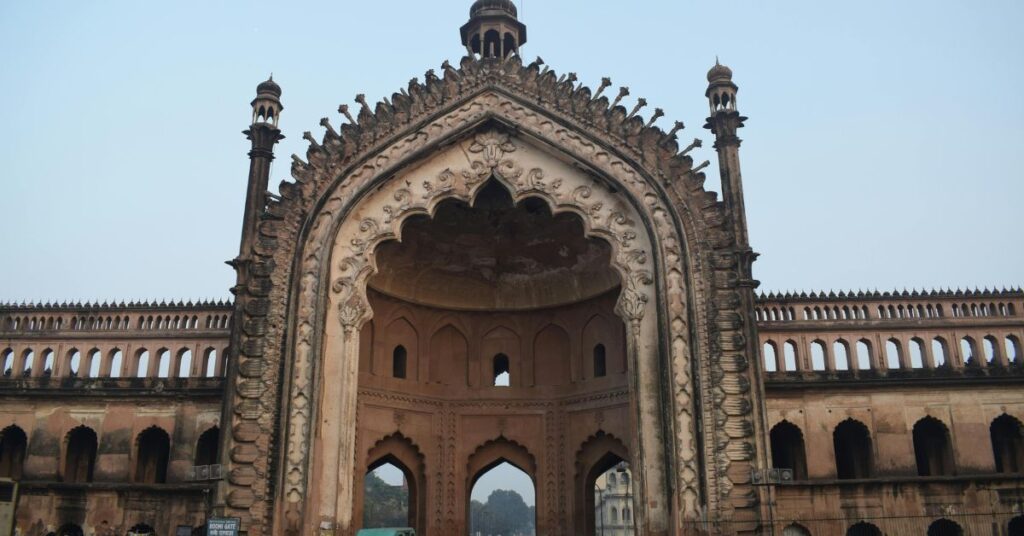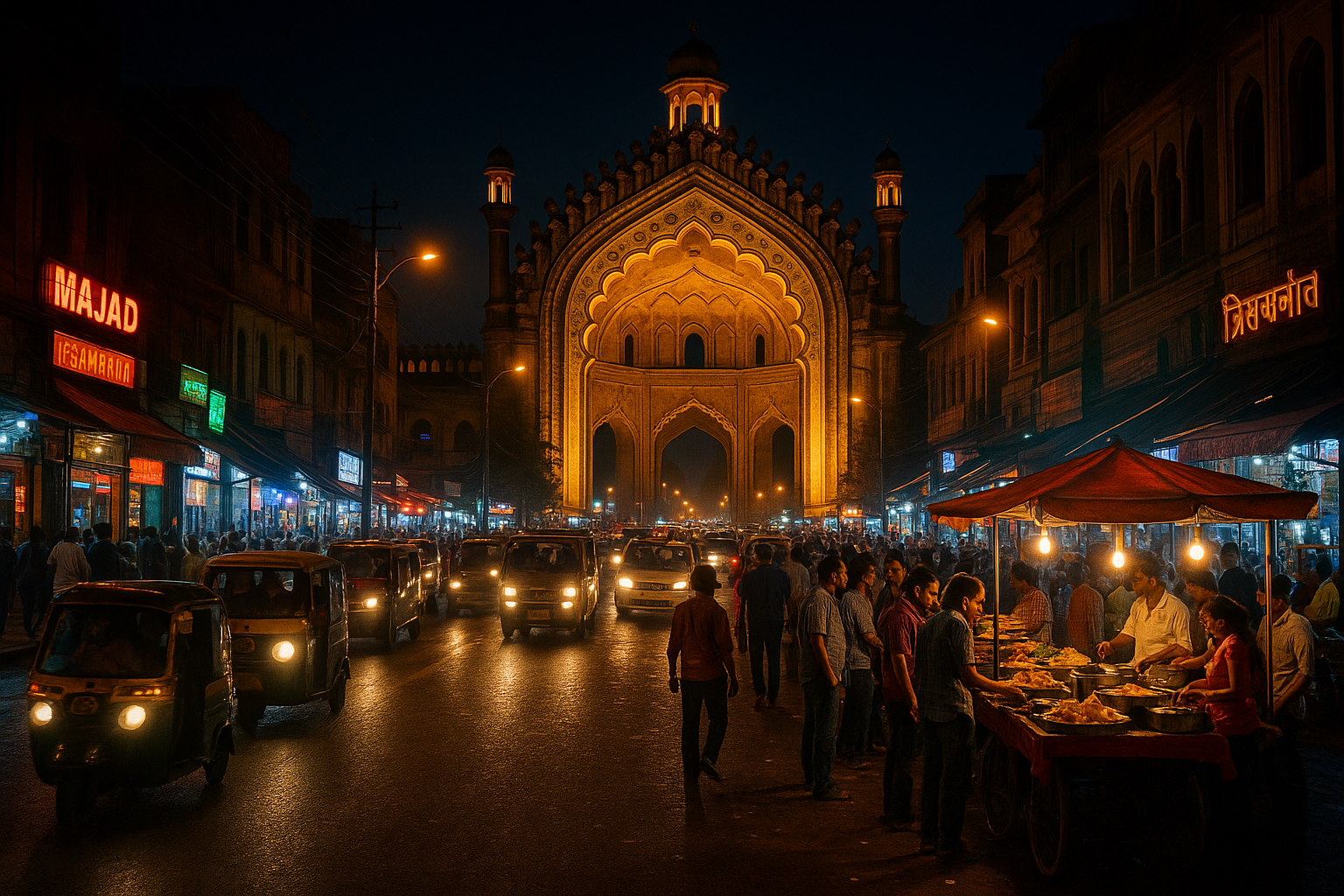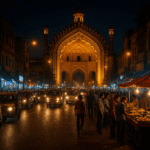Discover Lucknow Heritage Site —explore iconic sites like Bara Imambara, Rumi Darwaza, and British Residency in the City of Nawabs.
Lucknow, the city of Nawabs, boasts a culinary heritage as rich and layered as its history. For centuries, the city’s sophisticated courts fostered a unique gastronomic tradition, one that emphasizes delicate flavors, subtle spices, and an elegant presentation. This culinary legacy, a testament to the refined tastes of the ruling elite, continues to thrive today, captivating both locals and visitors alike. Indeed, a journey through Lucknow’s culinary landscape is a journey through time, a delicious exploration of a bygone era’s refined sensibilities.
Lucknow Heritage Site

The foundation of Lucknow’s cuisine lies in its use of aromatic spices. Unlike many other Indian regional cuisines that rely on bold, fiery flavors, Lucknow’s culinary tradition prioritizes subtlety and nuance. Cardamom, cloves, nutmeg, and saffron are frequently employed, lending dishes a fragrant complexity that tantalizes the palate. Furthermore, the use of ghee, clarified butter, is integral to the preparation of many dishes, contributing to their richness and creamy texture. This careful selection and measured application of ingredients are hallmarks of the Awadhi style of cooking, a style deeply ingrained in Lucknow’s identity.
One cannot discuss Lucknow’s culinary heritage without mentioning its iconic biryanis. These aromatic rice dishes, layered with succulent meats and fragrant spices, are a testament to the city’s culinary prowess. The slow cooking process, often involving a sealed pot, allows the flavors to meld and deepen, resulting in a dish that is both intensely flavorful and remarkably tender. Similarly, the kebabs of Lucknow are legendary, each bite a symphony of textures and tastes. From the succulent Galawati kebabs, so tender they melt in the mouth, to the smoky Seekh kebabs, each variety showcases the mastery of the city’s chefs. These kebabs, often served with a side of mint chutney, represent the pinnacle of Awadhi culinary artistry.
Beyond the celebrated biryanis and kebabs, Lucknow’s culinary repertoire extends to a vast array of other dishes. The sheer variety is astonishing, reflecting the city’s cosmopolitan history and its exposure to diverse culinary influences. For instance, the Nihari, a slow-cooked meat stew, is a hearty and flavorful dish, perfect for a chilly evening. Similarly, the sheermal, a saffron-infused bread, adds a touch of elegance to any meal. These dishes, along with countless others, demonstrate the depth and breadth of Lucknow’s culinary tradition.
However, the culinary heritage of Lucknow is more than just a collection of recipes; it’s a living tradition, passed down through generations of cooks and chefs. The city’s numerous restaurants and street food stalls offer a vibrant tapestry of culinary experiences, each dish a testament to the enduring legacy of the Awadhi culinary style. Moreover, the emphasis on hospitality and the sharing of food is integral to the Lucknowi experience, further enriching the culinary journey. In conclusion, exploring Lucknow’s culinary heritage is an immersive experience, a delicious exploration of a city’s rich history and cultural identity, a journey that tantalizes the senses and leaves a lasting impression on the soul.
Exploring Lucknow’s Architectural Gems
Lucknow, the capital of Uttar Pradesh, is a city steeped in history and renowned for its rich cultural heritage. This legacy is perhaps most vividly expressed in its architecture, a captivating blend of Mughal grandeur, Nawabi elegance, and British colonial influence. Exploring Lucknow’s architectural gems reveals a fascinating narrative spanning centuries, a testament to the city’s diverse past and the artistic sensibilities of its rulers and inhabitants.
One cannot discuss Lucknow’s architecture without mentioning the iconic Bara Imambara. This magnificent structure, built in the late 18th century by Nawab Asaf-ud-Daula, is a breathtaking example of Mughal architecture. Its imposing façade, intricate latticework, and the labyrinthine Bhool Bhulaiya within are testaments to the ingenuity of its builders. Furthermore, the sheer scale of the building, its soaring arches, and the impressive central hall, create an atmosphere of awe and wonder. Moving beyond the Bara Imambara, the city reveals a wealth of other architectural marvels.
Closely associated with the Bara Imambara is the Chhota Imambara, also known as Hussainabad Imambara. While smaller in scale than its counterpart, the Chhota Imambara possesses an equally captivating charm. Its dazzling interiors, adorned with intricate mirror work and sparkling chandeliers, create a mesmerizing spectacle of light and reflection. This opulent decoration stands in stark contrast to the austere exterior, highlighting the Nawabs’ penchant for both grandeur and subtle sophistication. In essence, the Imambaras represent the pinnacle of Lucknow’s architectural prowess during the Nawabi era.
However, Lucknow’s architectural landscape is not solely defined by its religious structures. The city boasts a number of stunning palaces and mansions, showcasing the opulence and refined taste of its aristocratic residents. The Rumi Darwaza, for instance, a majestic gateway inspired by the Sublime Porte in Istanbul, serves as a striking example of this architectural legacy. Its imposing structure, adorned with intricate carvings and detailed ornamentation, stands as a symbol of the city’s rich past and its connection to wider global influences. Similarly, the numerous havelis, or traditional mansions, scattered throughout the old city, offer glimpses into the lives of Lucknow’s elite families. These structures, with their intricate jalis (lattice screens), courtyards, and ornate facades, represent a unique architectural style that blends Mughal and local traditions.
The British colonial period also left its mark on Lucknow’s architectural landscape. While less prominent than the Mughal and Nawabi styles, the colonial structures offer a contrasting aesthetic. The Residency, for example, stands as a poignant reminder of the 1857 Sepoy Mutiny, its scarred walls bearing witness to a pivotal moment in Indian history. The British-built structures, often characterized by their neoclassical designs and functional layouts, stand in contrast to the more ornate and decorative styles of the preceding eras. This juxtaposition further enriches the city’s architectural tapestry, showcasing the evolution of its built environment over time.
In conclusion, exploring Lucknow’s architectural gems is akin to embarking on a journey through time. From the majestic Imambaras to the opulent palaces and the remnants of the colonial era, the city’s buildings tell a compelling story of its rich and multifaceted past. Each structure, with its unique style and historical significance, contributes to the city’s captivating architectural heritage, making Lucknow a truly remarkable destination for those interested in exploring the beauty and diversity of Indian architecture.




